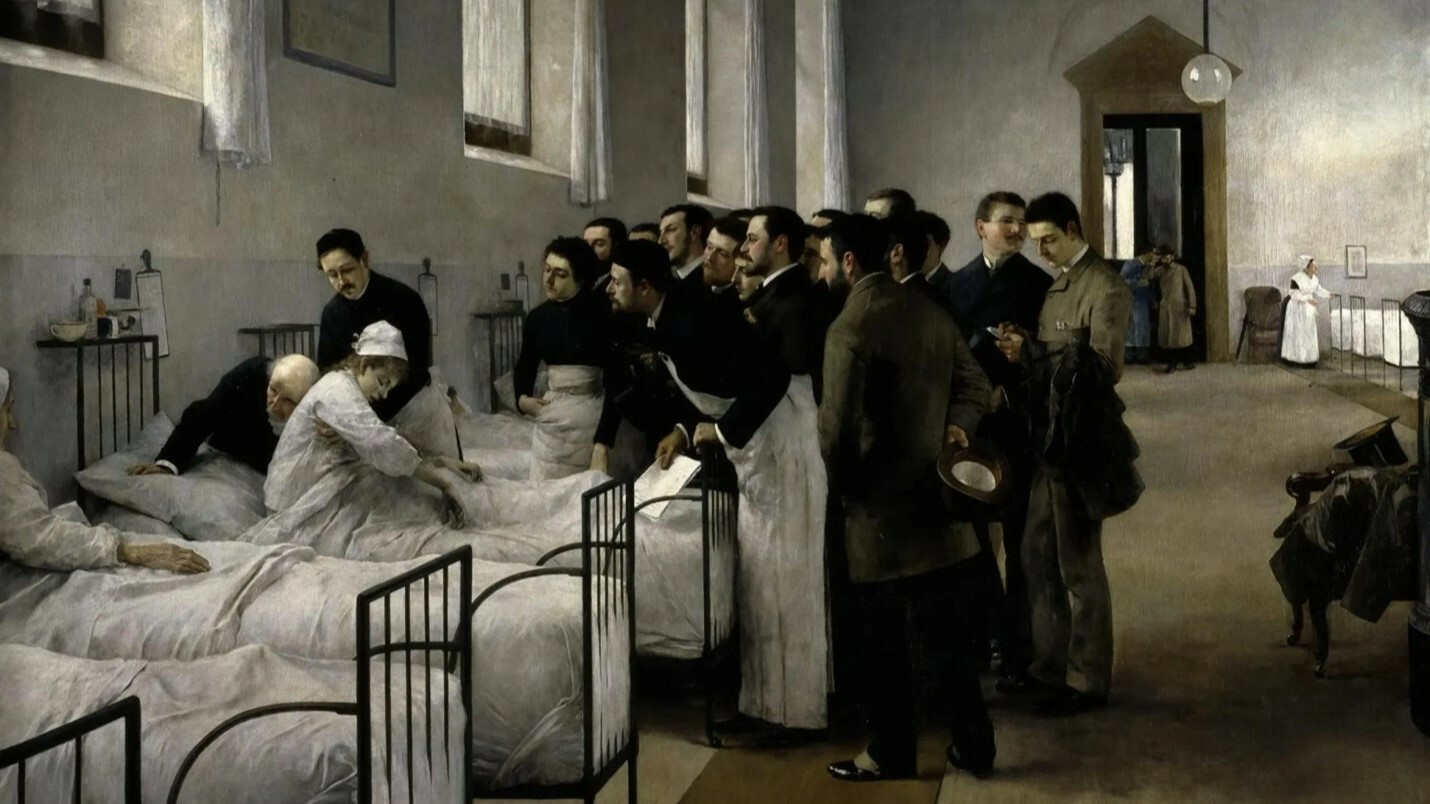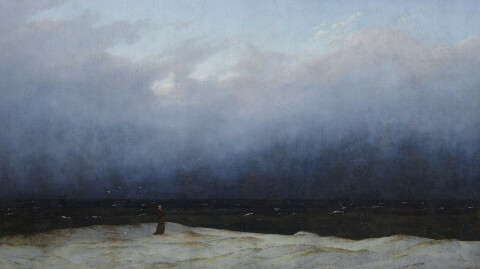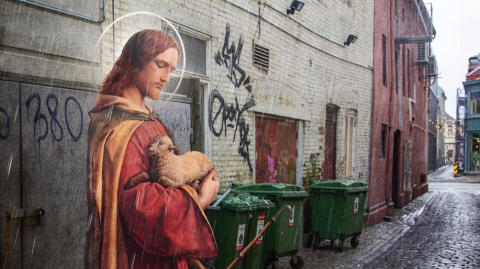A Hospital Ward during the Chief Physician’s Round, Painted by Louis Jimenez Aranda (1845-1928), Painted in 1889, Oil on canvas © Prado Museum, Madrid
TLDR: The art genre of social realism teaches the gospel of Jesus.
I think I may have mentioned I read a few art and faith blogs. One such blog is simply titled, Christian Art. The author, Patrick van der Vorst attended the University of Leuven in Belgium like Fr. Roman. Last June on the same day I was ordained to the transitional deaconate in Houston Texas, van der Vosrt was ordained as a Roman Catholic priest in London, England. Previously he worked in the art world including a director at Sotheby’s Auction House. Then, he launched the www.Christian.Art website in the period after having left the art-world and before starting seminary. In his daily reflections Patrick combines his knowledge of the arts with the Gospel, along with his personal journey to the priesthood. The website now has 70,000 daily readers of which I am one of the multitudes who love learning from Fr. Patrick about art and the Bible. I highly encourage you to subscribe if you want to learn along with me. True confessions, you may read some of Patrick’s material shared here because I find it too fascinating to keep all to myself!
Biblical, mythical, still-life, name a few of the various categories in art. Around the late 1800’s a new genre appeared, social realism. This term refers to an art style born from European realism that attempts to present the viewer (that’s us) a social critique of the living conditions of minorities or the working class during the 19th and 20th century. Social realism portrays the lives of poor and working folks. The Social Realism art movement was fueled by artists desperately trying to portray the harsh realities they saw in everyday life. This term can be used to describe the work done by not only visual artists but writers, the early filmmakers, and photographers- basically, anyone who used a creative medium to make a statement about the socio-political situations of the lower class.
By 1870, European artists began depicting the harsh working conditions fueled by the Industrial Revolution and the plight of the working class. Artists often created works with social and political goals in mind, particularly using their work to criticize wealthy elites and monarchies. To these artists, 19th and 20th century social problems were not faceless numbers but real people with real feelings and real lives. This is sounding a bit familiar as I read scripture and see the ministry of Jesus. By sharing the experience of the individual, the artists of the Social Realism movement invited their viewers to experience the true emotions that accompany exploitation, confusion, and reality. By sharing the experience of humanity, Jesus came to show us a different way to live, a better way to treat others.
From Sunday’s Gospel reading found in Mark 1, Jesus heals people in a variety of places. He sees the individual not just a swath of humanity. He also does some self-care by going to an unknown place to spend time with God.
Patrick writes,
“Our late 19th-century painting by Spanish artist Louis Aranda shows the tender care with which a doctor is attending to the patient. Onlookers are present. In our Gospel reading today we hear how each time Jesus is healing, onlookers are present as well, witnessing the miracles he is performing up close. Our painting won the gold medal for painting at the 1889 Universal Exhibition in Paris. the main attraction of that exhibition of course was the Eiffel Tower, a 300-meter high marvel of iron by Gustave Eiffel. But this painting here won first prize for painting. It is a social realist painting, depicting a visit to the hospital by a group of students accompanied by the chief physician, who teaches them how to examine the body of the patients. In this case, the patient is a semi-conscious young woman. The poor girl is unable to sit up on her own, so the doctor has asked one of the assistants, wearing a black hood, to help support her while he performs direct auscultation, the most important phase of the physical examination. This consists of putting the ear against the patient's back to listen to the rhythm of the heartbeat, an examination that is currently performed with a stethoscope. The other assistant, at the foot of the bed, holds sheets of paper with the medical history, ready to take notes. Are we just an onlooker and a spectator to the Gospel and to the world around us, or do we get stuck in like the medical students in our painting and participate in the chief physicians mission to help heal the world?
After reading about the headlining ministry of Jesus in the first half of the reading, we read in the second half, how is it then withdrawing to pray. Activity is often more appreciated than prayer; that is true of our own time as much as it was of Jesus’ time. Yet, Jesus shows us that the kind of activity which is an expression of God’s work must always be rooted in prayer. In prayer we open ourselves to God, and that helps to ensure that our own activity is in harmony with God’s desire for ourselves and for others.”
https://christian.art/daily-gospel-reading/mark-1-29-39-2024-2/
What about you? What do you think of the art category of social realism? Do you see any connection with social realism and the gospel of Christ? Jesus spent a huge amount of his time here on earth doing ministry that was very visible. But scripture also records how he took time away for self-care. Do you take care of yourself? How can you find some time in the business of life to spend alone and be with God just as Jesus did?
Rev. Leesa+





